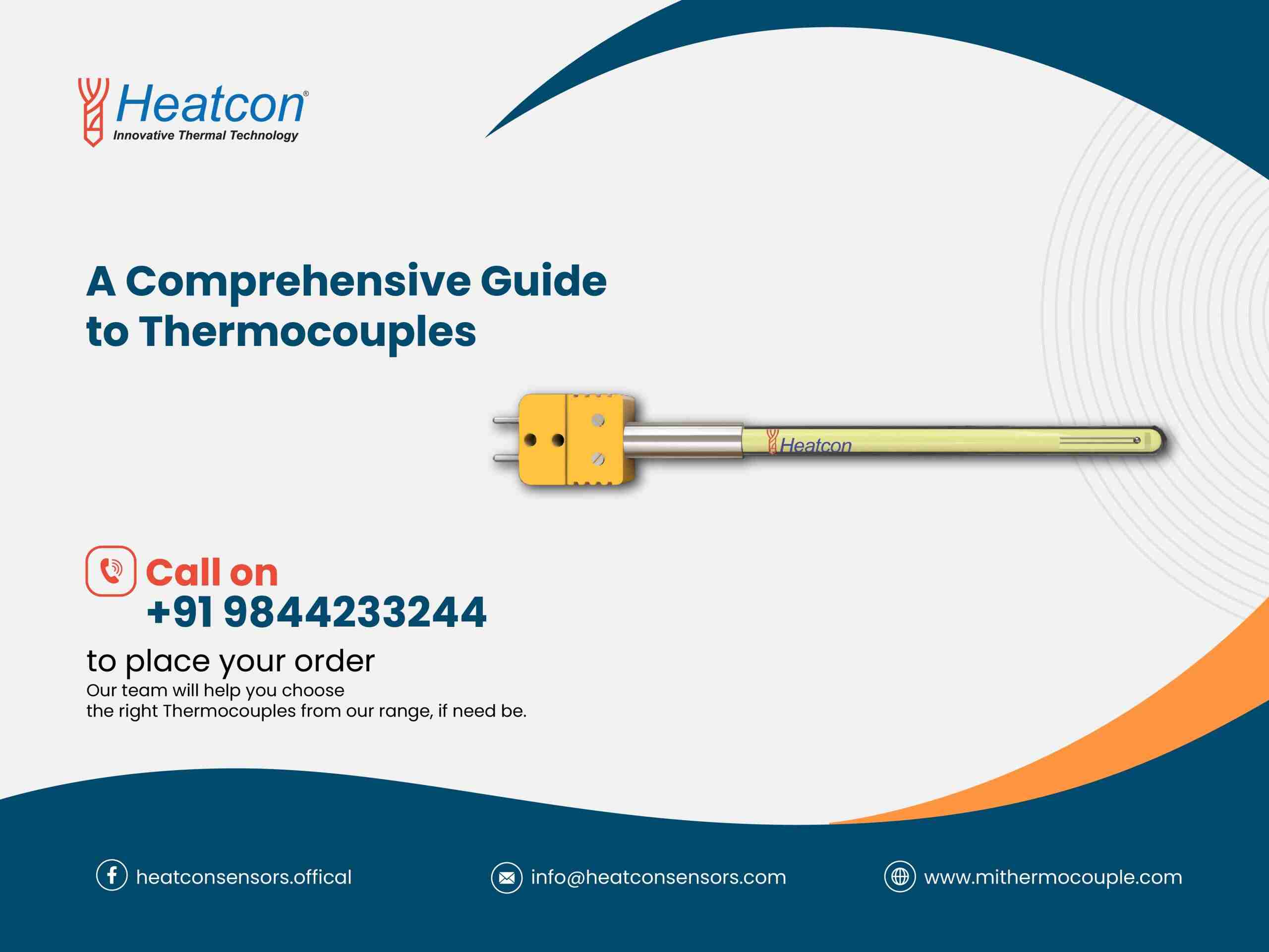Factors Influencing Thermocouples Accuracy
Choosing the Right Thermocouple Type
Thermocouples tend to serve as self-powered temperature monitoring tools, which convert thermal energy into electric current for precise temperature measurements of heating sources. Known for their simple application, reliability, durability, affordability, and ability to measure a broad spectrum of temperatures, these devices find their applications in diverse industrial fields. People use them in tasks like overseeing kiln & oven temperatures, regulating residential thermostats, automotive & aircraft sensors, and industrial & scientific processes, among others.
Functioning of a Thermocouple
A thermocouple comprises 2 dissimilar metal (or alloy) wires that run parallel to each other and converge at the tip. When this tip, which is also called the measuring junction/hot junction, encounters any changes in the temperatures, these 2 wires heat up or cool down at different rates, thus generating an electromotive force. This phenomenon, which is known as the Seebeck Effect, forms the basis of the thermocouple’s operation. The 2 metal wires also meet at the reference junction or the cold junction, maintained at a constant known temperature. Conventionally, some use an ice bath at 32°F for reference. However, modern-day electronic sensors now ensure that thermocouples can function across varied ambient temperatures.
Factors Influencing Thermocouples Accuracy
Although thermocouples are renowned for their reliability, still some factors are there that tend to influence the accuracy of temperature readings. These include the size of the device, its location, tolerance, self-heating, and state of the heating source. Moreover, electromagnetic interference (often from mechanical relay switches), oxidation/contamination of thermocouple junctions, mechanical stress on the wires, and the type of reference junction for cold junction compensation happen to be the significant factors.
Ensuring Precision
Choosing the right thermocouple and achieving accurate temperature measurements tends to necessitate the consideration of factors. These include the type, size, location, and tolerance according to specific application needs & controller type. Regular calibration & maintenance are also advisable to validate accuracy & detect any drift/degradation with time.
Varieties of Thermocouples
Various thermocouple types cater to diverse applications. Each of these possess distinct characteristics. Some of these are regarding temperature range, durability, vibration, sensitivity, chemical resistance, & application suitability based on the metals employed. A lettering system denotes the types. These are Types C, type E, type J, type N, type K, & type T. They utilize base metals. Type B, type R, type S, and type P employ noble metals.
Choosing the Right Thermocouple Type
The selection of the ideal thermocouple for your specific industrial application primarily hinges on the temperature requirements of the heating schedules. Type K thermocouples stand out for their widespread adoption owing to their durability, reliability, and accuracy across a broad range of temperatures, making them suitable for most heat treatment applications. However, Type R or S are suitable for materials having temperature demands exceeding Type K’s range. You can explore the best range at Heatcon Sensors and after careful examination, decide which one would fit best to your specific industrial application.


